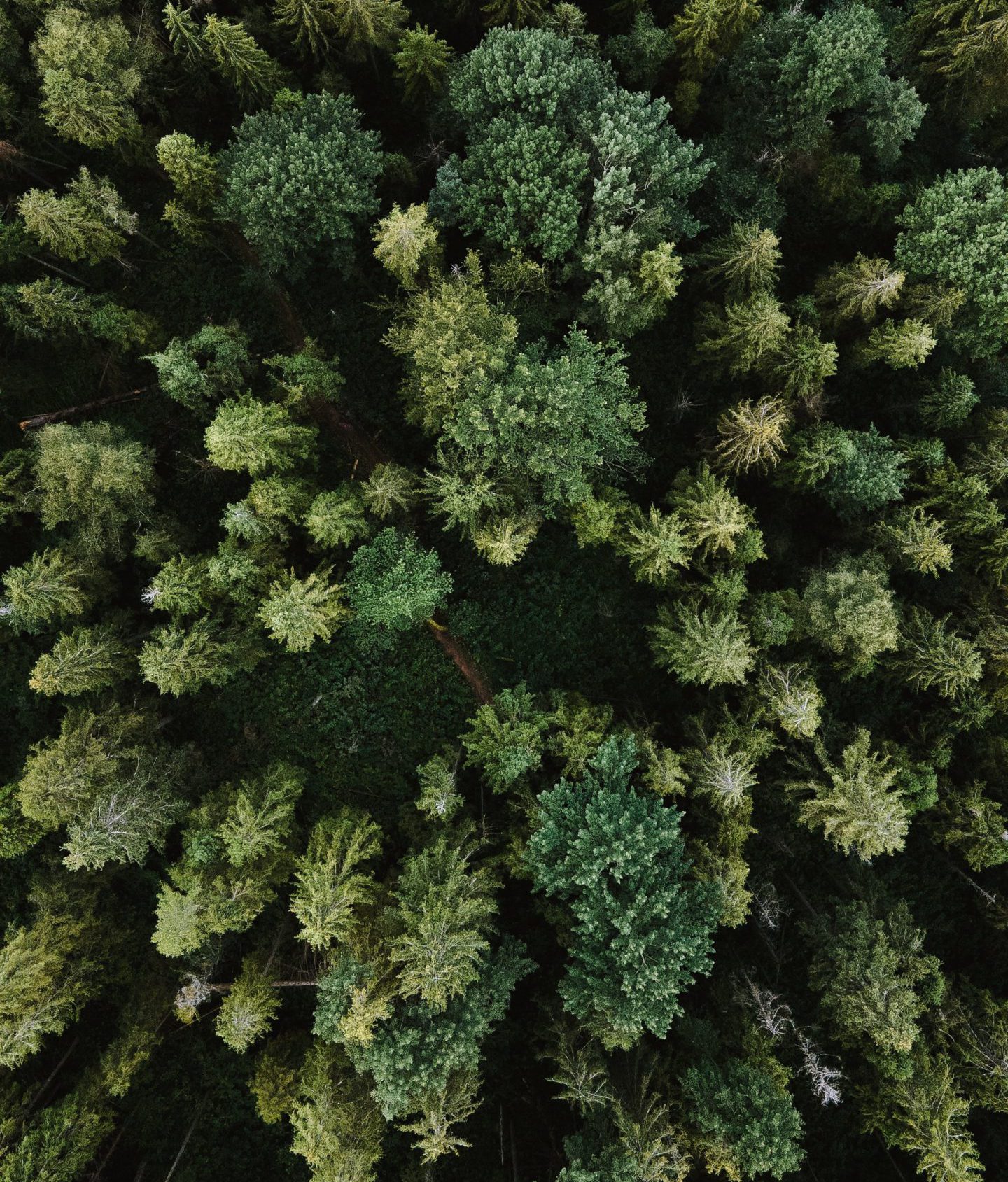By planting ten trees for every item you purchase, it’s our mission to plant 1 billion trees by 2030. Head to our website to learn more and begin your planting journey with 10% off.
Forests are some of the most beautiful, magical places on Earth. There’s something about the untouched beauty deep within their roots that makes them feel like a glimpse into another world.
Covering 31 percent of the earth, they are nature’s factories for producing clean air, water, and creating a safe haven for all living organisms around them. They provide habitat for thousands of species and support the lives of 1.6 billion people.
But sadly, deforestation and forest degradation continue to take place at alarming rates. Between 2015 and 2020, the rate of deforestation was estimated at 10 million hectares per year. Inspired to protect the trees and all the species it holds let’s look at just ten of the many reasons why forests are so important.
1. Forests produce oxygen
Trees take in the carbon dioxide that we breathe out and, in turn, provide us with the oxygen we need to live.
Through photosynthesis, the leaves on a tree pull in carbon dioxide and water and use energy from the sun to convert these two elements into chemical compounds like sugars that feed the tree. When this chemical reaction takes place, oxygen is released by the tree as a byproduct. It is proposed that one large tree can provide a day’s supply of oxygen for up to four people.

Featured: French Terry V-Neck Jumpsuit
2. Forests are the world’s largest storehouses of carbon
Global warming occurs when carbon dioxide (CO2) and other air pollutants collect in the atmosphere and absorb sunlight and solar radiation that have bounced off the earth’s surface. Normally this radiation would escape into space, but these pollutants, which can last for years to centuries in the atmosphere, trap the heat and cause the planet to get hotter.
While the responsibility lies with us to work to reduce our carbon emissions, forests can help absorb carbon dioxide from the atmosphere. In tropical forests alone, a quarter of a trillion tons of carbon is stored in above and below ground biomass.
3. Forests keep people cool too
Shade is one of the most obvious ways forests keep us cool. Trees also help moderate the air temperature immediately around them through a process called transpiration. Trees absorb water through their roots. Then through transpiration, some of the water is released back into the air through tiny pores in their leaves.
In urban settings, tree canopies help sequester carbon, filter the air, enhance water quality, reduce stormwater management costs, and have a positive impact on our mental health. Spending time around trees has been shown to reduce stress, lower blood pressure, and boost our mood.
4. Forests influence the weather
Trees take the water from the soil and release it into Earth’s atmosphere. So, forests that are large can not only create their own micro-climates, they influence atmospheric conditions that can cause it to rain. And, if the forest is large enough, it influences weather patterns for thousands of miles. For instance, The Amazon rain forest has an effect on the weather as far away as the United States.
5. Forests provide habitats countless species
Home to 80% of the world’s terrestrial biodiversity, forests contain 60,000 different tree species, 80 percent of amphibian species, 75 percent of bird species, and 68 percent of the world’s mammal species.
6. Forests clean the air
Forests take in carbon dioxide, but they also clean the air of carbon monoxide, nitrogen dioxide and sulfur dioxide – all huge contributors of air pollution.
7. Forests help fight erosion
Forests help prevent the loss of topsoil through soil erosion in the ecosystems they’re found in. Trees reduce the effect of erosive forces, like wind and rain using their root systems and foliage. When deforestation takes place it can result in mudslides, dust storms and flooding in the surrounding area.
For example, the destruction of the mangrove estuaries along the coastline at our planting sites in Madagascar caused mudflats to wash into the ocean, destroying once-productive fisheries and increasing the vulnerability of coastal communities to hurricanes, tsunamis, and floods. Through planting efforts over the last decade, the mangrove forests have been restored, resulting in the return of a healthy aquatic ecosystem.

8. Forests can provide medicine
Many plants that are used to make medicine can be found in forests. Cacao trees provide theophylline, an asthma drug; while eastern red cedar needles contain a compound that helps fight MRSA. Over half of the plant compounds that are used in cancer-fighting medications are found in the rain forests.
9. Forests provide food
Trees provide us with nuts, berries, mushrooms, fruit, sap and seeds. Forests also support the lives of so many animals that humans consume, such as rabbits, squirrel, deer, elk, birds and fish.
10. Forests create jobs
Approximately 1.6 million people make their living from forests. Almost 10 million of those jobs are in conservation and management. Interested in getting a job in tree planting? Check out our guide for finding the right forestry career.


